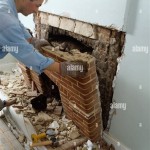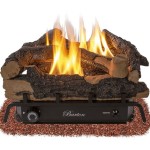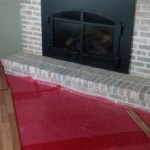The Allure of Fireplace Scented Candles: A Deep Dive
Fireplace scented candles have surged in popularity, offering a compelling alternative to traditional fireplaces, particularly in urban environments or spaces where a wood-burning hearth is impractical. These candles attempt to replicate the complex and comforting aromas associated with a crackling fire, evoking feelings of warmth, nostalgia, and relaxation. Understanding the appeal of these candles necessitates an examination of their composition, the psychological impact of their scent, and the technological advancements that contribute to their authenticity.
The human fascination with fire is deeply rooted in history. For millennia, fire has been a source of light, heat, protection, and community. Its presence evokes a sense of security and well-being, triggering positive associations with shared experiences and comforting memories. Fireplace scented candles capitalize on these innate connections, providing a readily accessible and affordable way to simulate the sensory experience, even without a physical fireplace.
The Scent Profile: Deconstructing the Fireplace Aroma
The scent of a fireplace is far more complex than a single note. It's a layered aroma comprised of various elements that contribute to the overall experience. Candle manufacturers strive to replicate this complexity using a blend of natural and synthetic fragrance oils. Common components include smoky accords, woody notes, spicy elements, and subtle hints of sweetness.
Smoky notes are central to the fireplace scent profile. These are often achieved using ingredients like cade oil, birch tar oil, or synthetic smoky accords. Cade oil, derived from juniper wood, offers a robust, smoky, and slightly medicinal aroma. Birch tar oil, on the other hand, provides a more intense and leathery smoky note. Synthetic smoky accords are carefully crafted blends designed to mimic the complexity of natural smoke without the harshness or potential health concerns associated with some natural smoky ingredients.
Woody notes provide the foundational backbone of the fireplace scent. These can range from cedarwood, known for its dry, pencil-shaving-like aroma, to sandalwood, which offers a creamier, warmer, and more opulent wood scent. Pine notes can also be incorporated to evoke the scent of burning pine logs, adding a touch of freshness and resinous character. Oakmoss absolute, while technically a lichen extract, contributes a damp, earthy, and woody aroma that further enhances the sense of authenticity.
Spicy elements often play a supporting role, adding depth and warmth to the overall fragrance. Cinnamon, clove, and nutmeg can be used sparingly to introduce a subtle spiciness that complements the smoky and woody notes. These spices evoke feelings of comfort and coziness, further reinforcing the association with a warm and inviting fireplace.
Subtle hints of sweetness can also be incorporated to balance the harsher smoky notes and add another layer of complexity. Vanilla, tonka bean, or even a touch of maple syrup fragrance can provide a gentle sweetness that rounds out the aroma and makes it more appealing.
The Psychological Impact: Scent, Memory, and Emotion
The sense of smell is uniquely linked to memory and emotion. Olfactory information travels directly to the limbic system, the part of the brain responsible for processing emotions and storing long-term memories. This direct connection explains why certain scents can trigger powerful emotional responses and vividly recall past experiences.
Fireplace scented candles leverage this connection by tapping into positive associations with warmth, comfort, and relaxation. The scent of a fireplace can evoke memories of holidays spent with family, cozy evenings by the fire, or the simple pleasure of escaping the cold outdoors. These associations create a sense of nostalgia and well-being, making fireplace scented candles a popular choice for those seeking to create a comforting and relaxing atmosphere.
The scent can also have a calming effect on the nervous system. The warm and woody notes often found in fireplace scented candles can help to reduce stress and anxiety, promoting relaxation and a sense of peace. This makes them a popular choice for use in bedrooms, living rooms, and other spaces where people seek to unwind and de-stress.
Furthermore, the act of lighting a candle itself can be a ritualistic and calming practice. The flickering flame and gentle glow create a soothing ambiance that complements the fragrance, further enhancing the overall sensory experience. This combination of scent and visual stimulation contributes to the psychological appeal of fireplace scented candles.
Technological Advancements: Enhancing Authenticity and Performance
The quality and authenticity of fireplace scented candles have significantly improved in recent years thanks to advancements in fragrance technology and candle-making techniques. These advancements have enabled manufacturers to create more complex, nuanced, and long-lasting scents that more accurately replicate the aroma of a real fireplace.
One key advancement is the development of more sophisticated fragrance blending techniques. Perfumers can now use advanced software and analytical tools to precisely control the proportions of different fragrance ingredients, creating highly complex and balanced scent profiles. This allows them to capture the subtle nuances of a fireplace aroma, such as the varying intensities of smoke, wood, and spice.
Another important advancement is the use of microencapsulation technology. This involves encapsulating fragrance oils in microscopic capsules that slowly release their aroma over time. This technology helps to extend the scent throw of the candle, ensuring that it continues to release its fragrance for a longer period. It also helps to prevent the fragrance from fading or changing over time.
The choice of wax also plays a crucial role in the performance of a fireplace scented candle. Soy wax, beeswax, and coconut wax are popular choices due to their clean burning properties and ability to hold a high concentration of fragrance oils. These waxes also tend to burn more slowly and evenly than paraffin wax, which can result in a longer-lasting candle.
Finally, the design and construction of the candle wick can also impact its performance. The wick must be carefully selected to match the size and shape of the candle, as well as the type of wax and fragrance being used. A properly sized wick will ensure that the candle burns cleanly and evenly, without producing excessive smoke or soot. Some candles even incorporate wooden wicks, which produce a crackling sound reminiscent of a real fireplace, further enhancing the sensory experience.
In conclusion, the popularity of fireplace scented candles stems from a combination of factors, including the inherent human connection to fire, the complex and comforting aroma of a crackling hearth, and the psychological benefits of scent and relaxation. Advancements in fragrance technology and candle-making techniques have further enhanced the authenticity and performance of these candles, making them an increasingly appealing alternative to traditional fireplaces.

Replica By The Fireplace Scented Candle Maison Margiela Sephora

Fireplace Scented Jar Candle

20 Fireplace Candles That Smell Like The Real Deal

Fireplace Scented Jar Candle 6 5 Oz Com

Fireplace Scented Candle Lecture Au Coin Du Feu

Maison Margiela Replica By The Fireplace Scented Candle Nordstrom

Ling Fireplace Scented Candle Color Dark Green Sinsay 1508z 79x

Free Well Hung Fireplace Holiday Candle Funny Fire Place The Daddy

Replica By The Fireplace Scented Candle Maison Margiela Sephora

Replica By The Fireplace Scented Candle Maison Margiela








